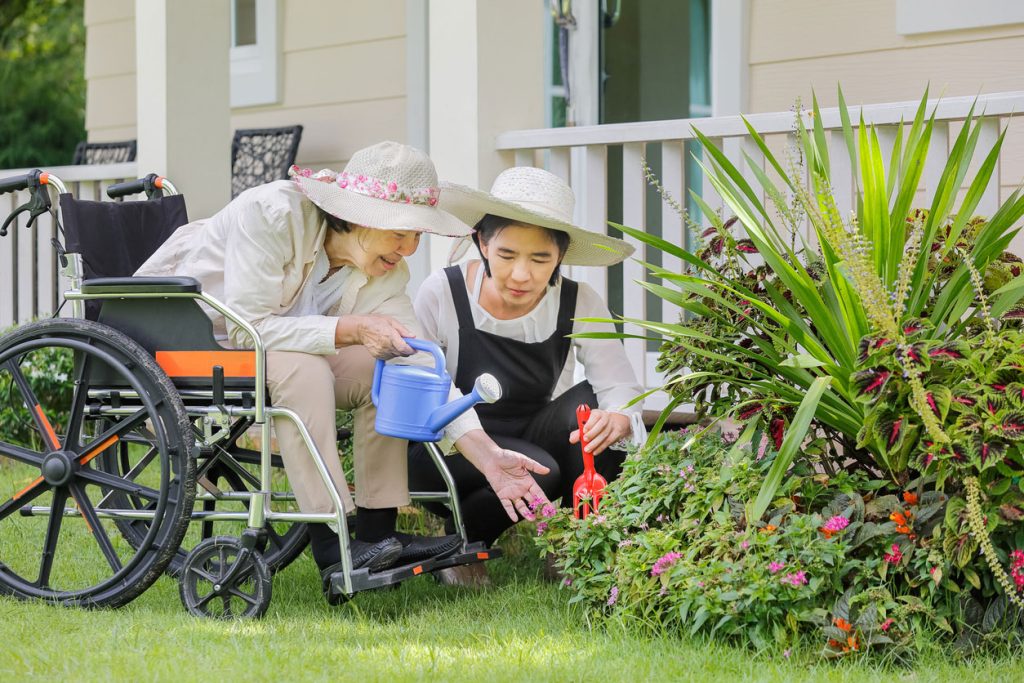Gardening is a joyful and fulfilling activity that many seniors love. It connects you with nature, keeps your hands busy, and provides a sense of accomplishment. However, limited mobility can sometimes make traditional gardening methods challenging. Fortunately, with a few adjustments and creative approaches, gardening can remain a beloved hobby that’s both accessible and enjoyable.
Let’s explore how seniors with limited mobility can cultivate their green thumbs without strain or discomfort.
The Benefits of Gardening for Seniors
Gardening offers more than just pretty flowers or fresh vegetables. It’s a way to stay active, improve mental health, and engage in a rewarding hobby. The physical movements involved in gardening, such as planting, watering, and harvesting, can improve flexibility and strengthen muscles.
Beyond physical benefits, gardening is also great for mental well-being. Spending time outdoors, soaking up sunlight, and tending to plants can reduce stress and boost mood. For seniors, gardening can also provide a sense of purpose and the joy of nurturing life.
Adapting Your Garden for Accessibility
If limited mobility makes bending, kneeling, or walking difficult, adapting your gardening space can make a world of difference. Raised garden beds are an excellent option. These beds bring the soil closer to your hands, so you don’t need to bend over or kneel. They can be built at a height that works for you, making gardening easier and more comfortable.
Another option is container gardening. Using pots and planters allows you to grow flowers, vegetables, and herbs in a compact and manageable space. Containers can be placed on tables, shelves, or even sturdy carts with wheels, making them easy to access and move around.
Vertical gardening is another creative solution. By using trellises, wall planters, or hanging baskets, you can grow plants upwards instead of outward. This saves space and reduces the need for bending or reaching.
Choosing the Right Tools
The right tools can make a big difference when gardening with limited mobility. Look for tools with ergonomic designs, which are easier to grip and use. Long-handled tools can help you reach plants without stretching or bending too much.
Lightweight tools are also a good choice, as they reduce strain on your hands and arms. You can find specialized gardening tools designed for seniors or individuals with mobility challenges, which often include cushioned handles and adjustable features.
A gardening stool or bench with wheels can also be a helpful addition. It allows you to sit while you work and move around the garden without standing for long periods.
Planning a Manageable Garden
When gardening with limited mobility, it’s important to keep your garden manageable. Start small, focusing on a few plants or a single garden bed. You can always expand your garden later if you feel comfortable.
Choose low-maintenance plants that don’t require constant attention. Hardy perennials, drought-tolerant plants, and slow-growing vegetables are excellent options. These plants thrive with less frequent watering, pruning, and care, making them perfect for a senior-friendly garden.
Using Gardening to Stay Active
Even with limited mobility, gardening can be a gentle way to stay active. Simple tasks like planting seeds, watering plants, or picking vegetables involve movements that keep your muscles and joints flexible.
Remember to pace yourself and take breaks as needed. Gardening is meant to be enjoyable, not exhausting. Listen to your body, and don’t hesitate to rest if you feel tired.
If you’re unable to do certain tasks, don’t hesitate to ask for help. Family, friends, or even neighbors may be happy to assist with heavier or more challenging gardening chores.
Indoor Gardening for All-Year Enjoyment
If outdoor gardening isn’t an option, indoor gardening can be just as rewarding. Growing houseplants, herbs, or even small vegetables indoors allows you to enjoy gardening year-round.
Place your indoor plants near windows where they can receive natural light. You can also use grow lights to provide additional lighting if needed. Indoor gardening offers the same mental and physical benefits as outdoor gardening, without the challenges of weather or outdoor accessibility.
Staying Safe While Gardening
Safety is an important consideration when gardening with limited mobility. Avoid overexertion by working in short sessions and staying hydrated. Protect your skin from the sun by wearing a hat, sunscreen, and lightweight, breathable clothing.
Use knee pads or a cushioned mat if you need to kneel. If standing for long periods is difficult, invest in a sturdy stool or chair to sit on while you work.
Make sure pathways in your garden are clear and easy to navigate, reducing the risk of trips or falls. If possible, create wide and level paths that accommodate walkers, canes, or wheelchairs.
The Joy of Growing Something New
Gardening isn’t just about the plants—it’s about the joy of creating something beautiful and nurturing life. Whether you’re growing colorful flowers, fragrant herbs, or tasty vegetables, the process of watching your plants thrive can be incredibly rewarding.
If you’re new to gardening or exploring it after a long break, start with simple plants that are easy to grow. Sunflowers, tomatoes, basil, and marigolds are all excellent choices for beginners.
Conclusion
Gardening with limited mobility is not only possible but can be a deeply fulfilling and enjoyable activity. By making adjustments to your garden layout, using the right tools, and choosing manageable plants, you can continue to enjoy this timeless hobby without strain or discomfort.
The key is to focus on what works for you and to embrace the creative ways you can adapt gardening to suit your needs. With a little planning and effort, your garden can become a place of relaxation, joy, and connection with nature, no matter your level of mobility.

